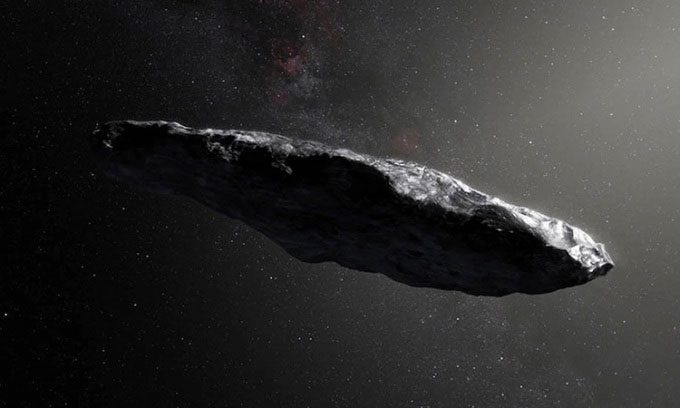A research team from Harvard University estimates the number of extraterrestrial spacecraft that could exist based on the speed of detection of interstellar objects.
When it was discovered in October 2017, ‘Oumuamua became the center of attention as the first interstellar object to visit the Solar System. Professor Avi Loeb at Harvard University leads a small group of astronomers who suggest it could be a spacecraft manufactured by an extraterrestrial civilization.

Illustration of the interstellar object ‘Oumuamua. (Photo: European Southern Observatory/M. Kornmesser)
In a new study, Loeb and co-author Carson Ezell, also an astronomer at Harvard University, predict the number of objects similar to ‘Oumuamua that could exist in the Solar System, Interesting Engineering reported on October 31. They present an impressive figure: 4 trillion trillion.
Loeb and Ezell do not claim that there are 4 trillion trillion extraterrestrial spacecraft flying near Earth, nor do they definitively classify ‘Oumuamua as a spacecraft. They merely estimate the number of extraterrestrial spacecraft and other artificial objects that could exist in the Solar System.
The research team stated that the recent speed of detection of interstellar objects and known capabilities could be used to estimate the density of similar objects in the vicinity of the Sun. Their results are based on four interstellar objects observed to date: ‘Oumuamua, two meteoroids CNEOS 2014-01-08 and CNEOS 2017-03-09, and comet Borisov. The two Harvard scientists also acknowledge the limitations of human observation in distant areas of the Solar System.
In their new study, Loeb and Ezell provide two figures after calculations. First, they estimate the number of interstellar objects that could be flying around the Solar System, beyond the reach of artificial devices. They suggest there are 40 million trillion trillion such objects.
The next figure, smaller at 4 trillion trillion, represents the number of such objects that could be flying towards the “habitable zone” of the Solar System. These are closer to the Sun, meaning astronomers have more opportunities to observe them. Loeb and Ezell also note that the sizes of these objects vary greatly, with most likely not exceeding one meter in width.
Loeb advocates for openness in the scientific community regarding UFOs and extraterrestrial hypotheses. Last year, he established the Galileo Project to create a global network of telescopes and cameras to capture high-resolution images of UFOs. He has shared that humans could see such images “within two years.”
In their new study, Loeb and Ezell also point out that new observatories will enhance the ability to photograph objects like ‘Oumuamua. For example, the Vera C. Rubin Observatory, expected to be operational next year, will be equipped with a 3.2 billion pixel camera to survey the entire southern sky every four days.


















































